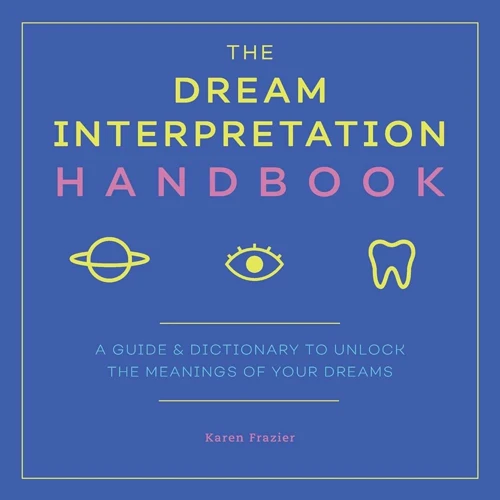Flying dreams have long captivated the human imagination, offering a glimpse into a world where gravity and limitations cease to exist. This enigmatic phenomenon holds deep symbolism, stirring a sense of awe and wonder within us. Exploring the significance of flying in dreams unravels a tapestry of meanings, from notions of freedom and empowerment to spiritual connections and personal growth. In this article, we delve into the multifaceted interpretations of flying dreams, examining their psychological, spiritual, and cultural implications. Join us on this ethereal journey as we unravel the secrets of the dream world and offer insights into the profound symbolism of flying in dreams.
The Concept of Flying in Dreams

Flying in dreams is a captivating and mysterious concept that has fascinated humans for centuries. Dreams of flying often elicit a sense of joy, liberation, and exhilaration, as they defy the laws of gravity and allow individuals to soar through the skies. These dreams can be vivid and realistic, or they can take on a more fantastical and surreal nature. The act of flying in dreams is symbolic and can hold various meanings depending on the individual and the specific context of the dream. It is important to note that the interpretation of flying dreams is highly subjective and can vary from person to person. To begin understanding the symbolism of flying dreams, it is essential to explore some common interpretations associated with this phenomenon. By analyzing these interpretations, we can gain valuable insights into the deeper meanings behind our dreams and their potential impact on our waking lives.
1. Flying as a Symbol of Freedom
Flying in dreams as a symbol of freedom is a powerful and evocative representation. When we dream of flying, it often signifies a deep yearning for liberation and the desire to break free from the constraints of our daily lives. It is a transformative experience that allows us to transcend the limitations of our physical bodies and explore new possibilities. Flying dreams can awaken a sense of independence and self-reliance, reminding us that we have the ability to rise above challenges and soar to great heights. This symbolism of freedom in flying dreams can be interpreted as a reflection of our inner desires for autonomy and the need to assert our individuality. It serves as a reminder to embrace opportunities for growth and exploration, both in our dream world and waking life. To further understand the symbolism of flying dreams and explore other dream interpretations, you can refer to various dream symbol meanings that provide insights into the hidden messages of our subconscious mind.
2. Flying as a Symbol of Power and Control
Flying dreams can also serve as a symbol of power and control. When we are flying in our dreams, we experience a sense of mastery over our surroundings, as we effortlessly navigate through the sky. This symbolism suggests that we have a deep-seated desire for control and influence in our waking lives. Flying represents a sense of autonomy and authority, allowing us to rise above obstacles and assert our dominance. It signifies our ability to transcend limitations and take charge of our own destiny. In these dreams, individuals often feel a surge of confidence and empowerment, as they tap into their inner strength and assert themselves in a powerful manner. The symbolism of flying as a symbol of power and control can be linked to our aspirations for success, achievement, and leadership in various aspects of life. It reflects our desire for autonomy and the ability to shape our own path. By embracing the symbolism of flying dreams, individuals can tap into their own inner strength and assert their power and control in their waking lives. Soar like an eagle, and let the power of flight inspire you to take charge and achieve your goals.
3. Flying as a Symbol of Escapism
Flying dreams can also serve as a symbol of escapism, providing a temporary reprieve from the challenges and stressors of waking life. In these dreams, the act of flying can represent a desire to break free from the constraints and limitations that one may be experiencing in their day-to-day existence. It may signify a need to escape from responsibilities, conflicts, or overwhelming emotions. Flying becomes a means of seeking solace, where individuals can temporarily detach themselves from reality and find a sense of relief and freedom. The dreamer may use flying as a way to distance themselves from difficult situations, allowing them to explore new perspectives and gain a sense of control over their circumstances. The symbolism of escapism in flying dreams can serve as a gentle reminder that it is important to find healthy outlets to unwind and rejuvenate in order to maintain emotional well-being. Exploring this symbolic aspect of flying dreams can lead to a deeper understanding of the need for balance and self-care in everyday life.
Common Variations of Flying Dreams

When it comes to flying dreams, there are several common variations that individuals may experience. These variations can provide further insight into the symbolism and meaning behind the dream. One common variation is flying at different altitudes. In some dreams, individuals find themselves soaring high above the ground, reaching great heights and taking in breathtaking views. This may signify a sense of freedom, ambition, and a desire to rise above life’s challenges. On the other hand, some dreams may involve flying at lower altitudes, just above the ground or tree level. This can symbolize a need for grounding, stability, and a focus on practical matters. Another variation involves the presence or absence of wings. In some flying dreams, individuals may have wings, serving as a powerful symbol of freedom, strength, and self-expression. Without wings, flying may still be possible, indicating that the individual possesses an innate ability to overcome obstacles and take control of their life’s direction. Dreams of flying in different landscapes also provide intriguing variations. From soaring over vast oceans to navigating through bustling cities or serene landscapes, the dream environment can offer additional clues to the dream’s meaning. For instance, flying over the sea may represent emotional freedom and exploration, while flying through a cityscape might signify a desire for adventure or a need to navigate complex situations in waking life. Exploring these common variations sheds light on the diverse ways in which flying can manifest in dreams and unveils the intricate symbolism behind each unique experience.
1. Flying at Different Altitudes
Flying at different altitudes in dreams adds another layer of symbolism to the experience. The altitude at which one flies can reflect the emotional and psychological state of the dreamer. Soaring high in the sky, reaching great heights, can symbolize a sense of achievement, ambition, and a desire for freedom. This may indicate a feeling of overcoming obstacles and gaining a new perspective on life. On the other hand, flying at lower altitudes, close to the ground or just above it, may represent a need for grounding, stability, or a desire to stay connected to one’s roots. It could signify a need for security or a focus on practical matters. Exploring the different altitudes at which flying occurs in dreams can provide valuable insights into the dreamer’s aspirations and priorities, as well as their subconscious desires for growth and stability.
2. Flying with Wings or Without
Flying dreams can take on different variations, and one of the key distinctions is whether the dreamer is flying with wings or without them. When dreams portray the dreamer with wings, it often signifies a sense of innate power and freedom. The presence of wings suggests that the dreamer possesses the ability to overcome obstacles and soar to great heights. This imagery can symbolize a strong sense of self-confidence and empowerment, as well as a desire for independence and breaking free from limitations. Dreams of flying without wings, on the other hand, may represent a different aspect of the dreamer’s subconscious. These dreams emphasize a more effortless and spontaneous form of flight, where the dreamer glides through the air with grace and ease. This lack of wings may symbolize a freedom that is not bound by physical or material constraints. It suggests the possibility of transcending limitations and embracing a sense of boundless potential. Whether flying with wings or without, both variations of flying dreams point towards a yearning for liberation and a desire to explore new horizons. Exploring the specific nuances and emotions associated with these variations can provide valuable insights into the dreamer’s subconscious mind and their aspirations in waking life. To further understand the symbolism of flying dreams and explore other dream symbols, you can refer to a comprehensive dream symbols guide (link) that can provide deeper insights into the rich world of dreams.
3. Flying in Different Landscapes
Flying in different landscapes within dreams adds another layer of symbolism and significance to the experience. The landscapes encountered while flying can range from familiar surroundings to completely fantastical realms, each contributing to the overall meaning of the dream. For example, flying over a lush green meadow may evoke feelings of peace, harmony, and connection with nature, while soaring through a bustling cityscape may represent a desire for adventure or a sense of being on top of the world. Additionally, the landscapes encountered during flying dreams can reflect the dreamer’s emotions and subconscious thoughts. If the dreamer finds themselves soaring over a desolate and barren wasteland, it could signify feelings of emptiness, isolation, or the need for change. On the other hand, flying over pristine beaches or majestic mountains can symbolize a sense of serenity, inspiration, and awe. Every landscape encountered in a flying dream offers valuable insight into the dreamer’s inner world and should be examined in the context of their personal experiences and emotions. Understanding the symbolism of different landscapes in flying dreams can provide clarity and guidance for the individual’s waking life and help them navigate through various challenges and aspirations.
Psychological Interpretations

Psychological interpretations of flying dreams shed light on the inner workings of the human mind and emotions. Such dreams can be seen as representations of self-confidence and empowerment. When we soar through the air with ease and control, we tap into a sense of self-assurance and belief in our abilities. Flying dreams can also symbolize the process of overcoming obstacles and fears. Just as we conquer gravity in our dreams, we may be encouraged to confront challenges and insecurities in our waking lives. Flying dreams often reflect a deep desire for freedom and independence, where the act of flying becomes a metaphor for breaking free from limitations and societal constraints. It is important to explore the personal context and emotions surrounding these dreams to gain a better understanding of their psychological significance. Reflecting on the specific circumstances and emotions experienced during flying dreams can provide valuable insights into one’s own psyche and subconscious desires. Understanding the psychological interpretations of flying dreams enables individuals to uncover hidden aspects of themselves and navigate the complexities of their inner world.
1. Self-confidence and Empowerment
Flying dreams can often be interpreted as a reflection of one’s self-confidence and the sense of empowerment that comes with it. When we soar through the sky in our dreams, effortlessly navigating through the air, it symbolizes a belief in our abilities and a heightened sense of self-assurance. The act of flying can represent a newfound freedom and independence, allowing us to escape the restrictions and limitations that may exist in our waking lives. It can serve as a reminder that we have the power within us to overcome obstacles and conquer our fears. Flying dreams can also signify a desire for personal growth and transformation, a willingness to break free from the constraints of the mundane and reach for greater heights. As we soar through the dream realm, we tap into our inner strength and resilience, embracing our true potential. By exploring the symbolism of flying dreams, we can gain a deeper understanding of ourselves and harness the confidence needed to navigate life’s challenges with grace and determination.
2. Overcoming Obstacles and Fears
Overcoming obstacles and fears is a powerful interpretation of flying dreams. When we fly in our dreams, we are often able to navigate effortlessly through the air, avoiding any obstacles that may come our way. This symbolizes our ability to overcome challenges and face our fears head-on. Flying dreams can serve as a reminder that we possess the inner strength and resilience to conquer any obstacles that stand in our path. It is a representation of our courage and determination to rise above difficult situations. Flying in dreams can help us build confidence and belief in ourselves, reminding us that we have the capability to overcome even the most daunting challenges. By embracing the symbolism of flying dreams and recognizing our ability to soar above obstacles, we can gain the motivation and inspiration needed to tackle challenges in our waking lives. These dreams encourage us to confront our fears and embrace a sense of empowerment and freedom. They serve as a reminder that we are capable of achieving great things, despite the obstacles that may appear in our journey. So, the next time you find yourself flying through the dream world, remember that it is a symbolic representation of your innate strength and resilience, urging you to overcome fears and conquer any hurdles that may come your way.
3. Desire for Freedom and Independence
The desire for freedom and independence is one of the key interpretations associated with flying dreams. When individuals experience flying in their dreams, it often represents a longing for liberation from the constraints of their everyday lives. This symbolism can manifest in different ways, depending on the specific circumstances and emotions within the dream. For some, flying may symbolize a yearning to break free from societal expectations and norms. It can signify a strong desire to assert one’s individuality and live life on one’s own terms. Flying in dreams can also represent a need for independence and autonomy, particularly in situations where individuals feel trapped or controlled in their waking lives. The sensation of soaring through the sky, unrestricted and weightless, can evoke a sense of empowerment and a deep longing to escape limitations and responsibilities. This interpretation aligns with the idea that flying dreams serve as a subconscious expression of our innate human yearning for freedom and autonomy. By recognizing and exploring this desire for freedom and independence within our flying dreams, we can gain a deeper understanding of our own hopes, aspirations, and the ways in which we may seek to break free from perceived barriers or constraints in our waking lives. For more information on dream symbolism, you can explore our article on the symbolism of snakes in dreams.
Spiritual and Mystical Interpretations

Spiritual and mystical interpretations of flying dreams delve into the profound connection between the dreamer and the spiritual realm. Many spiritual traditions view flying in dreams as a symbol of transcendence and spiritual elevation. One interpretation relates flying to astral projection and out-of-body experiences, where the dreamer’s consciousness separates from their physical body and travels to different realms or dimensions. This interpretation suggests that flying dreams can be a gateway to explore the expansiveness of the soul and connect with higher realms of consciousness.
Another spiritual interpretation of flying dreams is the idea of connecting with divine energy or spiritual guides. Some believe that flying represents a close bond with spiritual entities or deities who guide and protect the dreamer on their spiritual journey. Flying dreams can be seen as a symbol of being in harmony with the universe and tapping into its limitless energy.
Flying dreams also tie into the concept of personal growth and transformation. They symbolize the ability to rise above challenges and limitations, transcending earthly concerns and limitations. Flying represents freedom from the constraints of the physical world, allowing the dreamer to embrace their true potential and experience personal growth and self-realization.
Flying dreams can be interpreted as a reminder to nurture one’s spiritual well-being and seek inner peace. They serve as a metaphor for the soul’s longing for liberation and enlightenment. These dreams encourage individuals to explore their spiritual path, embrace their intuition, and cultivate a deeper connection with their higher self.
Spiritual and mystical interpretations of flying dreams emphasize the dreamer’s spiritual journey, self-discovery, and connection with the divine. They invite individuals to explore the depths of their consciousness, embrace their spiritual nature, and embark on a transformative path of personal and spiritual growth.
1. Astral Projection and Out-of-Body Experiences
Astral projection and out-of-body experiences are often associated with flying dreams, adding a mystical and transcendent dimension to the experience. Astral projection refers to the belief that one’s consciousness can leave their physical body and travel to other realms or dimensions. In the context of flying dreams, this interpretation suggests that the dreamer is capable of exploring new horizons and experiencing reality beyond the constraints of the physical world. It is believed that during astral projection, individuals can visit different planes of existence, communicate with spiritual beings, and gain profound insights into their own identity and purpose. Similarly, out-of-body experiences involve a temporary separation of the consciousness from the physical body, allowing the individual to observe themselves from an external perspective. This interpretation of flying dreams implies a detachment from the earthly realm and a connection to higher realms of consciousness. Through these experiences, individuals may gain a deeper understanding of their spiritual nature and the interconnectedness of all things.
2. Connection with Higher Realms and Spirituality
2. Connection with Higher Realms and Spirituality
Flying dreams often carry a profound spiritual significance, invoking a sense of connection with higher realms. In these dreams, the act of flying is seen as a metaphorical representation of transcending earthly limitations and reaching a state of elevated consciousness. It is believed that flying dreams can allow individuals to tap into their spiritual essence and commune with the divine.
In such dreams, individuals may experience a deep sense of peace, serenity, and inner harmony as they navigate the celestial landscape. The ability to effortlessly soar through the skies symbolizes a higher level of spiritual awareness and enlightenment. It signifies a release from the burdens of the physical world and a connection to something larger and more profound than ourselves.
Flying dreams with spiritual undertones can also be seen as a symbolic journey towards self-discovery and personal growth. It is a reminder to explore our inner selves, delve into our spirituality, and seek a deeper understanding of our place in the universe. These dreams can encourage individuals to embrace their spirituality, cultivate a sense of purpose and meaning, and embark on a path of self-transcendence.
Flying dreams may be associated with the concept of astral projection, where the soul separates from the physical body and travels in the astral plane. Some interpret flying dreams as an indication of the soul’s ability to traverse different dimensions and connect with spiritual entities or guides.
It is important to note that the interpretation of flying dreams with spiritual elements is highly personal and subjective. Each individual may have their own unique experiences and interpretations based on their beliefs and experiences. Exploring these dreams with an open mind can lead to a deeper connection with one’s spirituality and a greater understanding of oneself.
Dreams of flying can hold a profound spiritual significance, representing a connection with higher realms and a journey towards spiritual growth. These dreams invite individuals to explore their inner selves, transcend limitations, and embrace their spiritual nature. By paying attention to the symbolism and emotions experienced during these dreams, individuals can gain valuable insights into their spiritual journey and find a sense of guidance and purpose in their waking lives.
3. Transformation and Personal Growth
Transformation and personal growth are profound themes often associated with flying dreams. When we dream of flying, it can signify a desire for change and the need for personal transformation. The act of soaring through the air represents the ability to rise above challenges and limitations in our lives. It symbolizes a liberation from restrictions and a willingness to embrace new experiences and perspectives. Flying dreams can serve as a metaphor for breaking free from old patterns, beliefs, and fears that may be holding us back. They encourage us to explore uncharted territories, push our boundaries, and evolve as individuals. In these dreams, we may feel a sense of empowerment and exhilaration as we navigate through the vastness of the sky, reflecting our own inner growth and potential. This transformational symbolism in flying dreams reminds us of our capacity for growth and the endless possibilities that await us when we let go of what no longer serves us. It encourages us to embrace change, take risks, and embark on a journey of self-discovery and personal development. As we spread our wings and soar higher, we tap into the transformative energy within us, paving the way for a more fulfilling and evolved existence.
Cultural and Symbolic References to Flying

Cultural and symbolic references to flying can be found in various mythologies, folklore, religions, and artistic expressions throughout history. In many ancient civilizations, the ability to fly was associated with gods, goddesses, and mythical creatures. For example, in Greek mythology, the god Hermes had winged sandals that allowed him to fly effortlessly, while the goddess Nike, the personification of victory, was often depicted with wings. These representations conveyed ideas of swiftness, freedom, and divine power. In Norse mythology, the Valkyries were legendary warrior maidens who could soar through the skies on winged horses, guiding fallen warriors to the afterlife. Similarly, in Native American folklore, the Thunderbird was a powerful creature capable of creating storms and flying with immense strength. These cultural references highlight the significance of flying as a symbol of transcendence, spirituality, and supernatural abilities. Flying also plays a prominent role in religious symbolism, such as in Hinduism and Buddhism, where deities and divine beings are often depicted with the ability to fly. Additionally, flying has been represented in various forms of artistic expression, such as literature and film. From the magical brooms of witches in fairy tales to superheroes soaring through cityscapes, the concept of flying serves as a metaphor for liberation, adventure, and the ability to overcome obstacles. These cultural and symbolic references to flying further reinforce its deep-rooted significance in human consciousness and our eternal fascination with the limitless possibilities of flight.
1. Mythology and Folklore
Mythology and folklore abound with references to flying, showcasing its significance and symbolism in various cultures around the world. In Greek mythology, the winged god Hermes, known as a messenger and a guide between realms, was often depicted with winged sandals or a winged helmet, enabling him to swiftly travel through the air. In Norse mythology, the gods Odin and Freya had the ability to transform into birds and soar across the heavens. The legend of Icarus and Daedalus illustrates the dangers of flying too close to the sun, highlighting themes of hubris and the consequences of disregarding limitations. In Native American folklore, the Thunderbird, a powerful and majestic bird, is associated with the sky and represents strength and protection. These cultural and mythical references to flying in dreams elucidate the enduring fascination and symbolic depth of this phenomenon across different societies and belief systems.
2. Religious Symbolism
Religious symbolism associated with flying dreams is a fascinating field of study that reveals the deep-seated spiritual connections humans have with the act of flying. In various religious traditions and beliefs, flying is often seen as a metaphor for transcending earthly boundaries and reaching higher realms of existence. In Christianity, flying can symbolize the ascent of the soul towards heaven or communion with divine beings. The image of angels and winged beings in religious texts further emphasizes the association between flight and spiritual transcendence. Similarly, in Hinduism, the concept of “vimana,” or celestial vehicles, represents the ability to travel between the earthly realm and the realms of gods and goddesses. Flying in dreams can be interpreted as a sign of divine favor, spiritual enlightenment, or a connection with higher powers. These religious interpretations of flying dreams underscore the profound significance that flight holds within the realm of the sacred and serve as a reminder of the spiritual dimensions of the human experience.
3. Literary and Film Representations
Literature and film have long captured the concept of flying dreams and incorporated them into their narratives, often using them as powerful symbols. In many literary works, flying is portrayed as a metaphor for freedom, escapism, and transformation. One notable example is J.M. Barrie’s beloved novel “Peter Pan,” where the character Peter Pan and the Lost Boys have the ability to fly, representing their eternal youth and freedom from the constraints of adulthood. Similarly, in the classic novel “Jonathan Livingston Seagull” by Richard Bach, the seagull protagonist learns to fly not only physically but also metaphorically, symbolizing self-discovery and individuality. In the realm of film, flying dreams are often depicted as transformative experiences. Movies like “The Wizard of Oz” showcase flying as a means to escape one’s troubled reality and enter a fantastical realm. “Superman” portrays flying as a representation of power, heroism, and the unlimited potential of the human spirit. These literary and film representations of flying dreams serve to reinforce the symbolic significance of flight and its profound impact on our collective imagination.
Interpreting Your Flying Dreams

Interpreting your flying dreams can provide valuable insights into your subconscious thoughts, desires, and emotions. Each flying dream is unique, and understanding the symbolism requires reflection and analysis. Here are three key steps to help you interpret your flying dreams:
1. Reflecting on Personal Context and Emotions: Consider the specific details of your flying dream, such as the location, the people or objects involved, and the emotions you experienced during the dream. Reflect on how these elements may connect to your waking life. For example, flying over familiar places could represent a sense of freedom and familiarity, while flying over unknown landscapes may symbolize exploration and new opportunities.
2. Examining Recurring Themes and Patterns: Pay attention to any recurring themes or patterns in your flying dreams. Are there specific types of flying, such as soaring effortlessly or struggling to stay airborne? Do certain emotions or situations accompany your dreams of flying? These patterns can provide clues about the underlying meanings of your dreams. Keeping a dream journal can help you identify and analyze these recurring themes.
3. Seeking Professional Guidance: If you find it challenging to interpret your flying dreams on your own, consider seeking guidance from a professional dream analyst or therapist. They can offer expertise and provide deeper insights into the symbolism and significance of your dreams. A trained professional can help you explore the underlying emotions and messages within your dreams, guiding you towards a more comprehensive understanding of yourself.
Remember that dream interpretation is highly subjective, and the meaning of flying dreams can differ from person to person. Trust your intuition and personal feelings when interpreting your dreams, as you are the best judge of your own subconscious experiences. Through careful reflection and exploration, you can unlock the hidden messages and profound lessons contained within your magical flights of the dream world.
1. Reflecting on Personal Context and Emotions
Reflecting on personal context and emotions is a key aspect of interpreting flying dreams. Each person’s dream experience is unique, and understanding the personal significance behind the dream is crucial. Start by analyzing the emotions felt during the dream – were you fearful, elated, or something else? Consider the context of your life at the time of the dream. Are there any specific challenges, desires, or aspirations that might relate to the symbolism of flying? By delving into the personal context and emotions surrounding the dream, you can uncover valuable insights and connections that shed light on the meaning behind your flying dreams. Taking the time to reflect on your personal experiences and feelings will help you unlock the hidden messages your dreams are conveying.
2. Examining Recurring Themes and Patterns
Examining recurring themes and patterns in flying dreams can provide valuable insights into their symbolism and significance. By paying attention to common elements that appear in multiple dreams, we can uncover underlying messages and emotions. Here are some key aspects to consider when analyzing recurring themes and patterns in flying dreams:
1. Flying Techniques: Take note of how you fly in your dreams. Do you soar effortlessly through the air, or do you struggle to gain altitude? Are you using any tools or methods to fly, such as wings or a magical device? The technique you use to fly can reflect your approach to overcoming obstacles in your waking life, depicting your level of confidence or resourcefulness.
2. Surroundings: Pay attention to the different landscapes and environments you fly through in your dreams. Are you flying over familiar places or exploring new and unfamiliar territories? The surroundings can symbolize your emotional state or the different aspects of your life that you are navigating. For example, flying over a vast ocean might represent a sense of freedom and expansiveness, while flying through a dense forest could symbolize the need to explore your subconscious mind.
3. Feelings and Emotions: Recall the emotions you experience during your flying dreams. Do you feel joyful, empowered, or scared? The emotions attached to your flying experiences can provide valuable insights into how you perceive and approach freedom, control, and fear in your waking life. For example, a sense of fear while flying may indicate underlying anxieties or a lack of confidence in taking risks.
4. Narrative Themes: Consider any recurring narratives or storylines that unfold during your flying dreams. Are there specific scenarios or events that repeat themselves? These narrative themes can offer clues about the subconscious patterns and desires that you may need to address or explore. For instance, if you frequently find yourself rescuing others while flying, it could reflect a pattern of putting others’ needs before your own in your waking life.
By analyzing these recurring themes and patterns in your flying dreams, you can gain deeper insights into your subconscious mind and uncover hidden beliefs and desires. Keeping a dream journal can be immensely helpful in recording and identifying these patterns over time, allowing you to decode the symbolism and messages of your flying dreams on a more profound level.
3. Seeking Professional Guidance
Seeking professional guidance can be beneficial when trying to interpret flying dreams that hold deep personal significance. While general interpretations and symbolism can provide valuable insights, the expertise of a trained therapist or dream analyst can offer a more nuanced and tailored understanding. These professionals specialize in dream analysis and can help unravel the intricate layers of symbolism specific to an individual’s experiences and emotions. They can provide a safe and supportive space for exploring the underlying themes and meanings behind flying dreams, helping individuals gain self-awareness and personal growth. Through their expertise, they can help identify patterns, explore unresolved issues, and offer guidance on how to integrate the wisdom from these dreams into one’s waking life. When seeking professional guidance, it is important to find a reputable and skilled practitioner who resonates with your personal beliefs and values. Taking this step can greatly enhance your understanding and interpretation of flying dreams, ultimately leading to a deeper understanding of yourself and your subconscious mind.
Tips for Lucidly Controlling Flying Dreams
Mastering the ability to lucidly control flying dreams can be an exhilarating experience. Here are some useful tips to help you develop and enhance your control over this form of dreaming:
1. Maintain Dream Recall: Keeping a dream journal and regularly recording your dreams will improve your dream recall. This heightened awareness will make it easier to recognize when you are in a flying dream and enable you to take control.
2. Reality Checks: Perform reality checks throughout the day to distinguish between waking life and dreams. Question your surroundings and test the laws of physics. This habit will eventually carry over into your dreams, allowing you to realize when you are dreaming and take command of your flight.
3. Visualize and Set Intentions: Before falling asleep, visualize yourself flying and set the intention to become aware during your dreams. This programming of the subconscious mind can increase the likelihood of having lucid flying dreams.
4. Reality Mapping: Create a mental map of your dreamworld. Visualize locations that you frequently visit in your dreams, including landscapes, landmarks, and even your own dream house. This practice will help in recognizing when you are dreaming and serve as a launching point for your flying adventures.
5. Engage the Senses: Take the time to engage your senses during a flying dream. Feel the rush of the wind against your skin, smell the scents in the air, and listen to the sounds around you. Deepening your sensory experience can enhance the realism of the dream and your control over the flying ability.
6. Practice Flying Techniques: Experiment with different flying techniques, such as flapping your arms, swimming through the air, or effortlessly gliding. Discover what feels most natural and enjoyable to you, and refine your technique over time.
7. Stay Calm and Confident: It is crucial to remain calm and maintain confidence throughout the dream. Doubt or fear can hinder your control and potentially wake you from the dream. Embrace your ability to fly with a sense of empowerment and enjoy the experience to the fullest.
8. Experiment and Push Boundaries: As you gain more control over your flying dreams, push the boundaries of what is possible. Attempt daring aerobatics, explore new landscapes, or even interact with dream characters while flying. The more you explore and experiment, the more exhilarating and fulfilling your flying dreams can become.
By utilizing these tips and consistently practicing lucid dream control, you can unlock the full potential of your flying dreams and embark on incredible and limitless journeys within the realm of your own mind.
Conclusion
In conclusion, the significance of flying in dreams goes far beyond the simple act of soaring through the skies. It serves as a powerful symbol that reflects our deepest desires, emotions, and aspirations. Flying dreams can represent freedom, power, and the ability to transcend barriers and limitations. They can also signify a yearning for escape, a need to break free from constraints and responsibilities. From a psychological perspective, flying dreams can symbolize self-confidence, empowerment, and the ability to overcome fears and obstacles. On a spiritual level, these dreams may be associated with astral projection, connecting with higher realms, and undergoing personal transformation and growth. The cultural and symbolic references to flying further enrich the interpretative landscape, drawing upon mythology, religion, and literature. Ultimately, the interpretation of flying dreams is a highly personal and subjective process, requiring introspection, reflection, and perhaps even professional guidance. By exploring the meanings behind our flying dreams, we can gain valuable insights into our subconscious minds and use these revelations to enhance our waking lives. So next time you find yourself soaring through the dream skies, pay attention to the symbols, emotions, and messages that accompany your flight, as they may hold the keys to understanding yourself on a deeper level.
Frequently Asked Questions
1. What does it mean if I dream of flying?
Dreaming of flying can symbolize freedom, power, and a desire to escape limitations. It may represent a sense of empowerment or the ability to rise above challenges in your waking life.
2. Why do some people have flying dreams more often than others?
The frequency of flying dreams can vary from person to person. Some individuals may have a greater inclination towards adventure, exploring new possibilities, and embracing a sense of freedom, which may manifest more frequently in flying dreams.
3. Can flying dreams have negative interpretations?
While flying dreams are often associated with positive emotions, they can also have negative interpretations. For example, flying dreams might represent a fear of losing control or being overwhelmed by responsibilities.
4. Are there any cultural or historical references to flying dreams?
Yes, references to flying dreams can be found across various cultures and throughout history. For example, in Greek mythology, flying dreams were believed to be a way for the gods to communicate with mortals.
5. Is there a connection between lucid dreaming and flying dreams?
Lucid dreaming, the state of being aware that you are dreaming, can sometimes enable individuals to control their dreams, including the ability to fly. Flying dreams can be particularly common in lucid dreamers.
6. Are there any practical benefits to analyzing flying dreams?
Examining the symbolism of flying dreams can offer insights into your subconscious thoughts, desires, and emotions. It can help you gain a better understanding of yourself and potentially influence personal growth and self-improvement.
7. Can flying dreams be interpreted differently based on the landscape?
Absolutely. The landscape in which you are flying can add layers of meaning to your dream. For instance, flying over mountains may symbolize overcoming challenges, while flying above the ocean may represent a connection to emotions and the unconscious mind.
8. Can flying dreams be influenced by real-life experiences?
Real-life experiences and emotions can certainly influence the content and symbolism of your dreams, including flying dreams. For example, if you recently experienced a significant accomplishment or a newfound sense of freedom, it might manifest in your dream as flying.
9. Can recurring flying dreams indicate something significant?
Recurring flying dreams can suggest that certain themes or issues in your life require your attention. It may be signaling the need to address unresolved emotions, embrace newfound freedom, or confront fears that are holding you back.
10. Can everyone learn to lucidly control their flying dreams?
Lucid dreaming is a skill that can be developed with practice and patience. While not everyone may achieve complete control over their dreams, heightening awareness and intentionality can potentially enhance the ability to influence and direct flying dreams.








